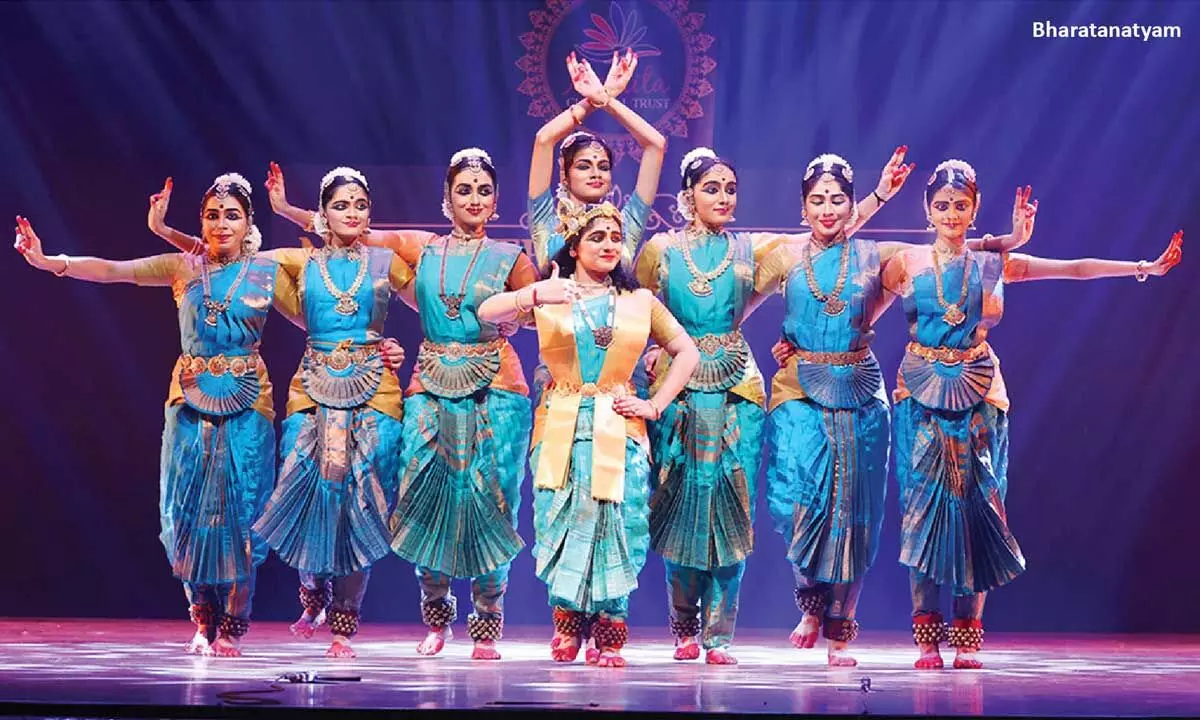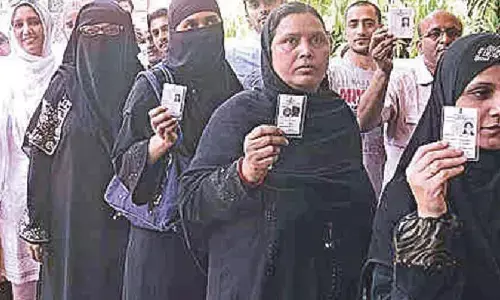Natya Thoranam 2024: A Grand Celebration of Classical Dance

Amrita Cultural Trust hosted a spectacular evening of classical dance, featuring captivating performances in Kathak, Bharatanatyam, Mohiniyattam, Odissi, and more. The event enthralled a large audience with its blend of tradition and innovation
Amrita Cultural Trust organized a veritable feast of classical dance at Shilpakala Vedika over the weekend, featuring an array of performances by artistes specializing in Kuchipudi, Andhra Natyam, Perini, Mohiniyattam, Odissi, Kathak, and Bharatanatyam. The event, titled ‘NatyaThoranam 2024,’ attracted a large audience who relished the elaborate show spread across several hours. Here, only the outstanding highlights of the program are summarised.
The Kathak performances were presented by disciples of senior Guru Shama Bhate’s “Nadroop” dance academy. Their mastery of ‘chakkars’ (spins) and impeccable sense of split-second timing were a marvel to behold. The rapid yet graceful rotations, executed with breathtaking precision, showcased the finesse of their training. Clad in sober wine-red and gold ‘aharyas’ (costumes), the dancers drew attention to their fluid body movements without the distraction of overly ornate detailing. The piece ‘Chaturang in Des’ seamlessly integrated four key elements— ‘tarana’, ‘sargam’, literature, and dance syllables. The ‘bandish’ depicted Lord Krishna’s playful ‘chhed-chhad’ (teasing). Another highlight, ‘Govardhan Leela’, celebrated the Lord’s greatness in sheltering man and nature, brought alive through lyrical movements and chhandas. A rigorous standard of synchronization and symmetry was maintained throughout, reflecting Guru Shama Bhate’s meticulous training and her experiments with both traditional and contemporary Kathak forms.
The languorous and graceful Mohiniyattam was performed by the disciples of Dr. Neena Prasad, who is professionally trained in Bharatanatyam, Kuchipudi, and Kathakali. Dressed in traditional white, gold, and green costumes, they performed a ‘cholkettu’, the customary opening piece of their repertoire. Set in Hamsadhwani, the swaying gestures characteristic of ‘lasya’ (feminine grace) captivated the audience, transporting them to the verdant land of Kerala. The Swathi Thirunal composition, “Paripalayamam,” a heartfelt prayer of surrender to Lord Padmanabha, was exquisitely rendered. The choreography poetically embodied the divine energies of light and sound, symbolized by the conch (Shankh) and discus (Chakra).
Bharatanatyam was represented by students of Guru Anitha Guha’s academy, Bharatanjali. Their performance commenced with ‘ShanmughaKauthuvam’, dedicated to Lord Muruga, followed by ‘AadumPadaanai’, a celebration of Lord Shiva’s cosmic energy. The dancers, dressed in cream and blue costumes, displayed flawless execution with extraordinary nritta (pure dance). Highlights included an excerpt from the ballet ‘Sundara Kandam’, portraying ‘Asura Mallari’ in ‘Rasikapriya’ and a joyous ‘thillana’ in ‘Kadanakuthuhalam’, which provided opportunities for costume changes into vibrant colors. The group shone like a radiant rainbow on stage, their exquisite formations and precise ‘natya’ evoking thunderous applause. Hanuman’s journey into Lanka in search of Sita was vividly depicted, while the ‘thillana’, celebrating Krishna’s playful spirit, was a joyful culmination. The creativity of Guru Anitha Guha was evident in the intricate tableaux that resembled living sculptures.
The grand finale featured Odissi performances by Guru Bichitrananda Swain’s group from Bhubaneswar. Composed entirely of male dancers, their rigorous synchrony and poise were awe-inspiring. With chiselled physiques and masterful execution, they maintained the highest aesthetic standards of ‘nritta and natya’. Their rendition of ‘Dashavatara’ from Jayadeva’s ‘Geeta Govinda’, portraying the ten incarnations of Lord Vishnu, was a majestic spectacle. The concluding piece, ‘Tala Taranga’, innovatively blended percussion instruments like ‘Mardal’, ‘Mrudanga’, and ‘Khanjani’, creating rhythmic tempos that resonated with the audience. Their performance received a well-deserved standing ovation, a testament to their artistry.
The event was made possible by the generous patronage of Rajesh and Bhargavi Pagadala, Managing Trustees of Amrita Cultural Trust. Their unwavering support and commitment to preserving and promoting classical dance forms deserve heartfelt appreciation and applause.
















